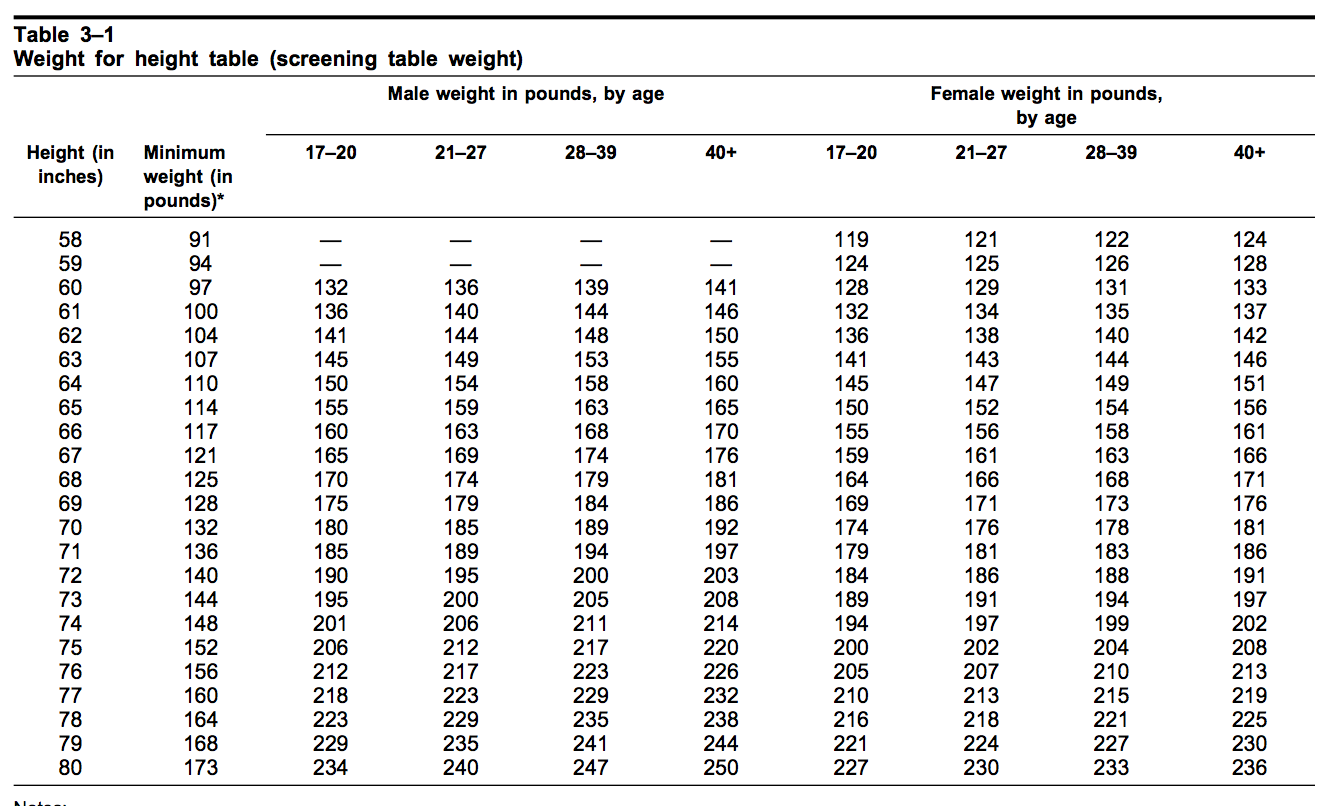When considering a career in the military, understanding the height and weight requirements for the army is crucial. These standards are established to ensure that all personnel meet the physical demands of military service. In this article, we will explore the specific height and weight requirements, how they are measured, and their importance in maintaining a fit and capable military force. Whether you are a prospective recruit or just curious about military standards, this guide will provide you with all the necessary information.
The U.S. Army has set specific height and weight standards to ensure that soldiers can perform their duties effectively. These requirements are based on a combination of factors, including age and gender. By adhering to these guidelines, the Army aims to maintain a force that is physically fit and ready for any challenges that may arise. In the following sections, we will delve deeper into these standards and provide insights into how they are applied.
In addition to height and weight requirements, the Army also emphasizes the importance of overall physical fitness. This includes not only maintaining a healthy weight but also engaging in regular exercise and training. Understanding these requirements can help potential recruits prepare for the rigors of military service.
Table of Contents
- Height and Weight Standards for the Army
- Importance of Height and Weight Requirements
- How Height and Weight are Measured
- Variations by Age and Gender
- Body Fat Percentage Standards
- Consequences of Violating Requirements
- How to Meet Height and Weight Requirements
- Frequently Asked Questions
Height and Weight Standards for the Army
The U.S. Army maintains strict height and weight standards for enlisted personnel and officers. These standards are designed to ensure that all soldiers are physically capable of performing their duties. The following table outlines the height and weight requirements for male and female soldiers:
| Category | Height Range (inches) | Maximum Weight (lbs) |
|---|---|---|
| Male | 60-80 | 140-265 |
| Female | 58-80 | 110-235 |
It is important to note that these weight limits are not absolute. They can vary slightly based on individual circumstances and body composition.
Importance of Height and Weight Requirements
Height and weight requirements serve several key purposes in the military:
- Physical Readiness: Ensuring that all soldiers are physically fit for combat and operational tasks.
- Safety: Reducing the risk of injury during training and combat operations.
- Team Cohesion: Promoting a level playing field among soldiers, enhancing teamwork and morale.
How Height and Weight are Measured
Height and weight measurements are taken under specific conditions to ensure accuracy. Typically, measurements are taken as follows:
- Soldiers must wear only a T-shirt and shorts during the weigh-in.
- Height is measured without shoes against a wall or measuring device.
- Weight is recorded using calibrated scales.
These measurements are conducted annually, and soldiers must maintain their weight within the established limits.
Variations by Age and Gender
The Army's height and weight standards vary based on age and gender. Generally, younger soldiers may have different requirements than older soldiers. Additionally, females have different standards compared to males. This approach acknowledges the natural differences in body composition and physical development.
For example:
- Male soldiers aged 17-20 have different weight limits than those aged 21-27.
- Female soldiers also have varying weight standards based on their age group.
Body Fat Percentage Standards
In addition to height and weight, the Army also evaluates soldiers based on body fat percentage. This is particularly relevant for those who may meet weight requirements but exceed body fat limits. The Army uses specific formulas to calculate body fat percentage, which considers neck and waist measurements.
Body fat percentage standards are as follows:
- Male Soldiers: Maximum of 20% body fat.
- Female Soldiers: Maximum of 30% body fat.
Consequences of Violating Requirements
Failure to meet height and weight requirements can have serious consequences for soldiers. These may include:
- Ineligibility for promotion.
- Placement on a weight control program.
- Potential separation from service if standards are not met over a specified period.
How to Meet Height and Weight Requirements
For those who are concerned about meeting the Army's height and weight standards, several strategies can help:
- Regular Exercise: Engage in a balanced fitness routine that includes cardio, strength training, and flexibility exercises.
- Healthy Diet: Focus on a nutritious diet rich in whole foods, lean proteins, and plenty of fruits and vegetables.
- Consult a Nutritionist: Consider working with a nutritionist to develop a personalized meal plan.
Frequently Asked Questions
Here are some common questions related to height and weight requirements in the Army:
- What happens if I don't meet the weight requirements? You may be placed on a weight control program and face potential separation from service.
- Are height and weight standards the same for all branches of the military? No, each branch has its own standards, although they are generally similar.
- Can I appeal if I believe my measurements are incorrect? Yes, soldiers can request a review if they believe their measurements were taken inaccurately.
Conclusion
Understanding the height and weight requirements for the Army is essential for anyone considering a military career. These standards are in place to ensure that soldiers are physically prepared for their duties and can perform at their best. By maintaining a healthy lifestyle and adhering to the Army’s guidelines, potential recruits can set themselves up for success.
If you have any comments or would like to learn more about the requirements, please leave a comment below. Don’t forget to share this article with others who may find it helpful!
Closing
Thank you for reading! We hope you found this article informative and useful. Be sure to visit our site again for more articles about military standards and fitness tips.




